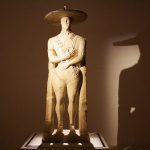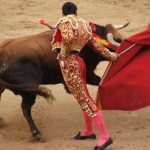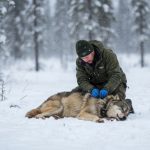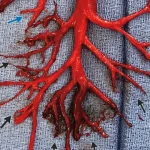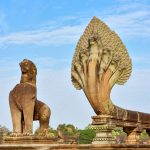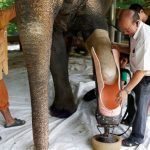The Heir of the Emerald Canopy: A Pact with the Wild

Related Videos:
Dr. Alistair Finch was a man of logic, peer-reviewed journals, and quantifiable data. His sanctuary was the remote, northern edge of the Peruvian Amazon, and his obsession was the elusive Spectacled Bear (Tremarctos ornatus). For three months, he had fought the humidity and the insects, deploying his sophisticated camera traps deep within the territory claimed by the nearly invisible indigenous community of the Kallawayas.

His mission was simple: capture footage of the bears’ feeding habits. His reward, however, was about to be something that would shatter his scientific worldview.
One scorching afternoon, Alistair sat in his crude, makeshift field lab, reviewing the night’s video logs. Clip after clip showed the usual—the twitch of a jaguar’s tail, the silent passage of a tapir, the fuzzy outline of a nocturnal bear high in a fig tree. Then came the feed from Camera Trap 4, positioned by a narrow, sun-dappled creek bed.

A large, dark shape lumbered into the frame—a fully grown Spectacled Bear. Alistair leaned closer, heart pounding. This was excellent footage.
But then, Alistair froze. He blinked once, then twice, convinced the humidity had warped his vision.
Perched easily on the bear’s broad, muscular back was a young boy, no older than six or seven.
The Impossible Sight

The boy was completely naked, his skin tanned a deep mahogany, his black hair tied back with a simple vine. He wasn’t clinging on in terror; he was sitting with the calm, relaxed posture of a rider on a gentle horse. The bear, usually cautious and solitary, moved with deliberate slowness, seemingly unconcerned by its passenger.
Alistair watched, breathless, as the pair moved through the dense undergrowth.

Action: The bear paused at the edge of the creek to drink. The boy slipped effortlessly from its back, not jumping, but sliding down the bear’s flank as if using a bannister. He knelt by the water, scooping a handful of clear water to his lips. The bear, finishing its drink, didn’t ignore the boy; instead, it gently nuzzled the back of the boy’s head with its large snout, an unmistakable gesture of affection and protection. The boy reached up, his small hand resting on the bear’s wet fur, and laughed—a bright, clear sound that seemed impossibly loud in the wilderness.
The bear then turned, and the boy scrambled back onto its back with the practiced grace of a seasoned bareback rider. With a final, shared glance at the camera trap—a glance Alistair felt piercing him across the miles—the pair melted back into the emerald shadows of the forest.
Alistair stared at the frozen frame for a full five minutes. The data logger confirmed the time and date. No trick of the light. No hoax. It was real.
The Sacred Tradition

Shaking with disbelief and a tremor of genuine awe, Alistair abandoned his post. He ran, pushing through thick vines and over slippery roots, the name of the nearest village echoing in his mind. He burst into the small clearing, startling the few villagers who were weaving under a sheltered roof.
He found the Chief, Kamayó, a man whose face was etched with the wisdom of the forest, sitting calmly near a low fire.
Alistair stammered, holding up his waterproof camera with the incredible footage. “Chief, I… I recorded something. Something impossible! A boy… riding a bear! Who is he? Is he in danger?”
Kamayó listened patiently, his dark eyes never leaving Alistair’s panicked face. When the researcher finished his breathless account, the Chief and the elders surrounding him did not gasp, did not frown. They merely smiled—a deep, ancient, knowing smile.

“That is Tupac, my son,” Kamayó said, his voice a low rumble. “He is the heir of our line.”
Alistair was stunned into silence. “But… the bears? For six months?”
“It is our custom,” Kamayó explained, leaning forward. “We are the Kallawayas. We are bound to the mountain spirits. The bear, ukumari, is our guide. For the one who will lead, the lesson must come from nature itself.”
The Chief explained that the boy was not lost, but placed. He was not abandoned, but guarded. Tupac was learning courage by sleeping next to a predator, humility by depending on the great beast, and respect by entering the wild on its own terms. The bears, they said, recognized the bloodline and honored the ancient pact. They were his tutors, his protectors, and his silent, furry guardians.
To Alistair, the man of data, it seemed a fantastic, impossible myth. But as he looked at the serene, resolute faces of the elders, he understood that to them, it was simply sacred truth.

Tupac was not just surviving; he was growing. He was gaining a knowledge no school could teach, a power no civilization could grant. He was learning to lead not by shouting, but by listening to the silent language of the earth.
And somewhere, hidden beneath the emerald canopy, the son of the Chief rode silently on his immense, furry steed—a child embraced by the wild, preparing to inherit his destiny.

